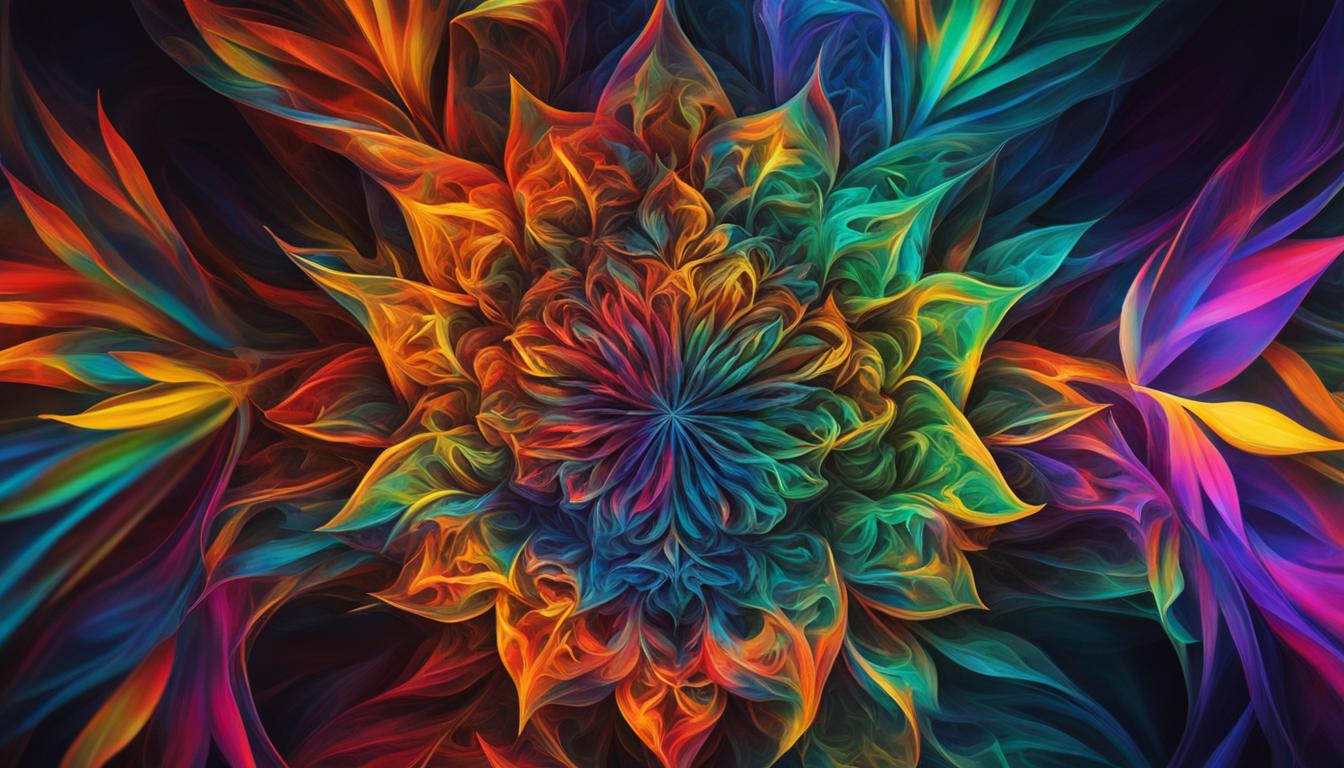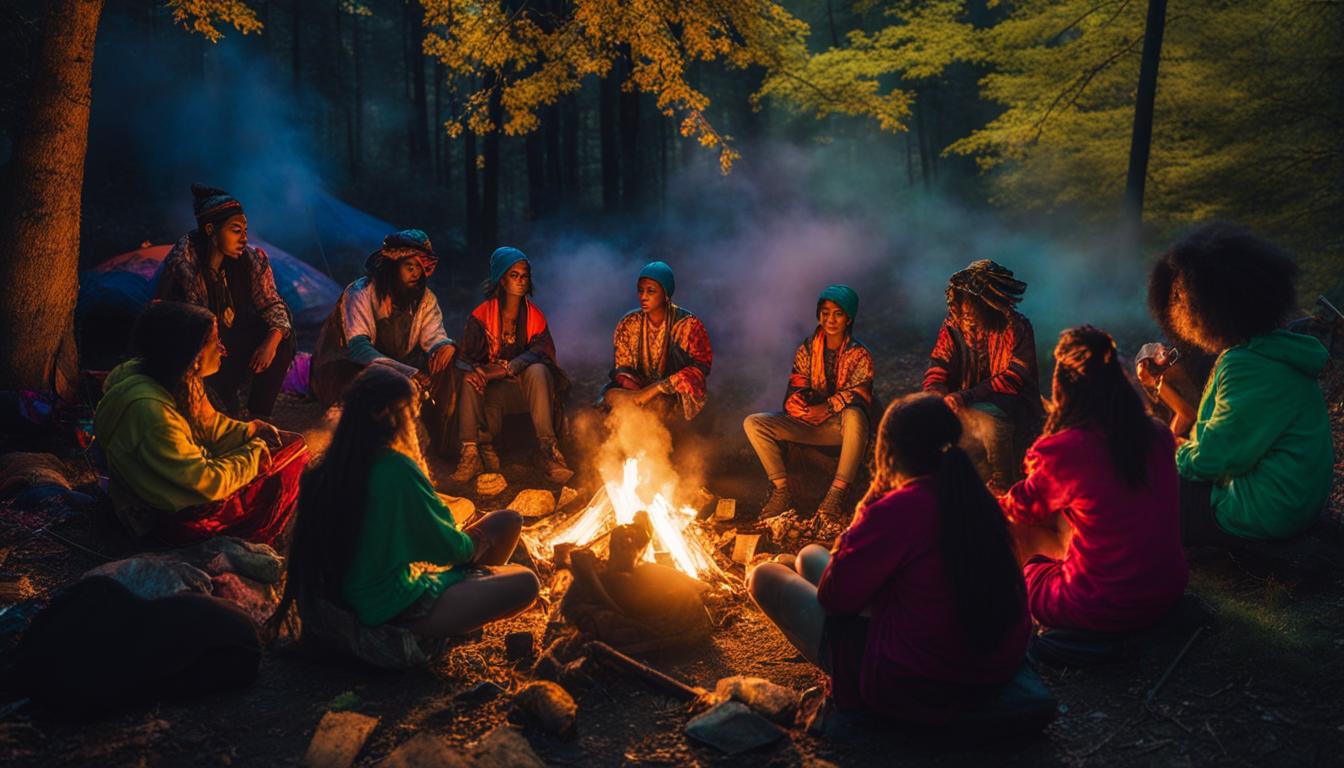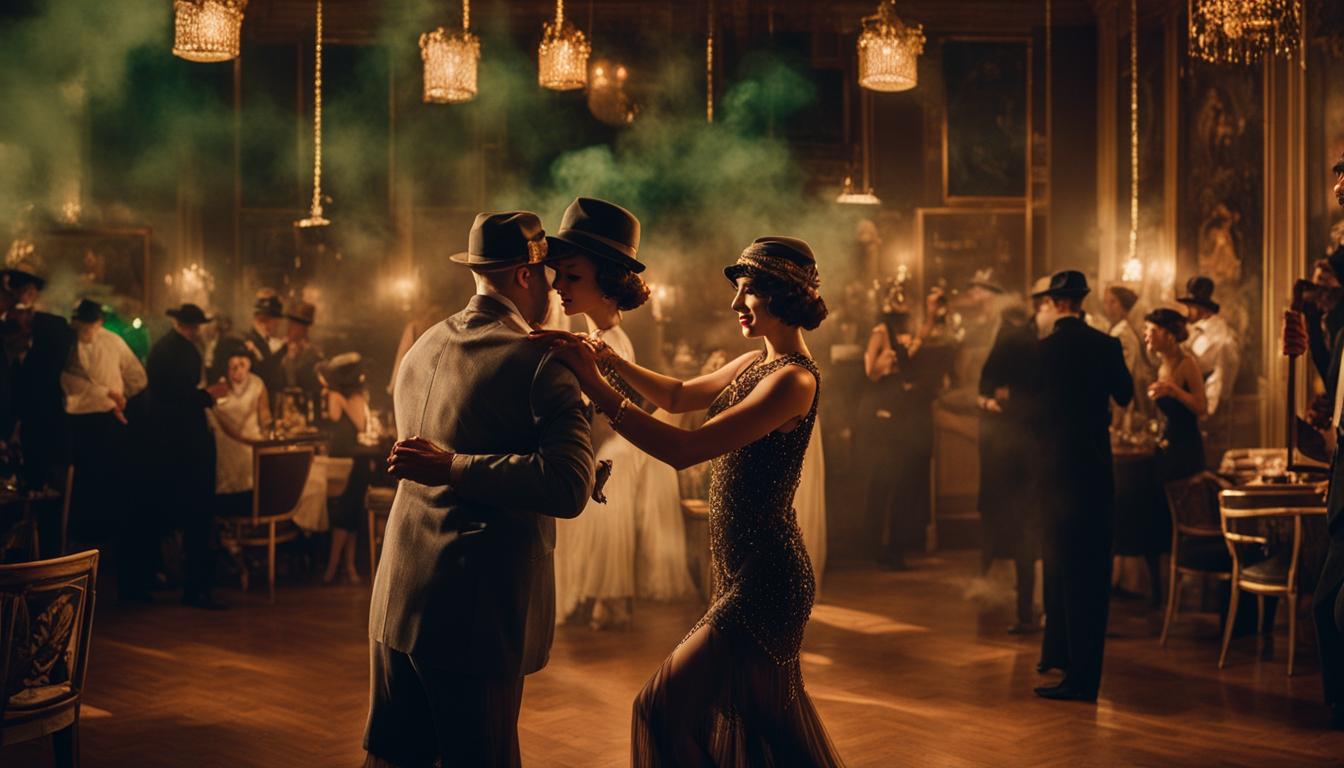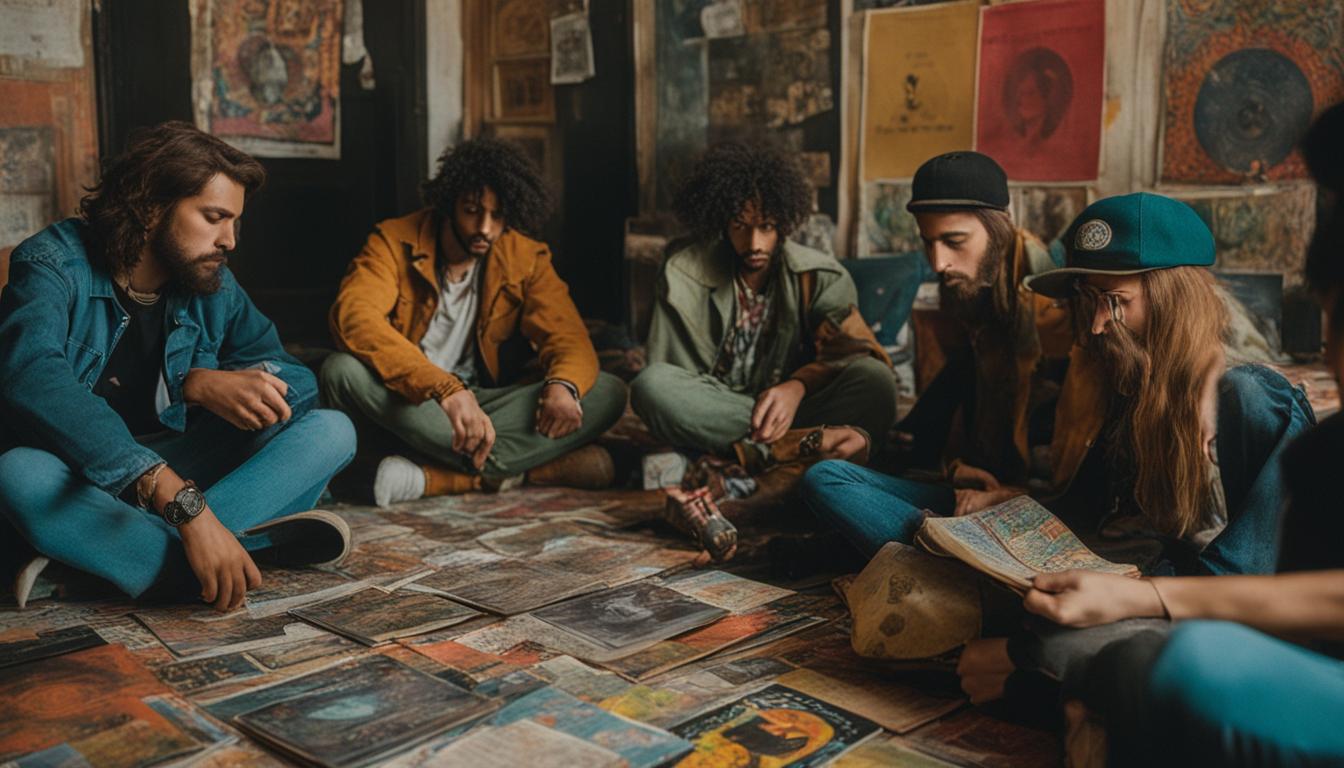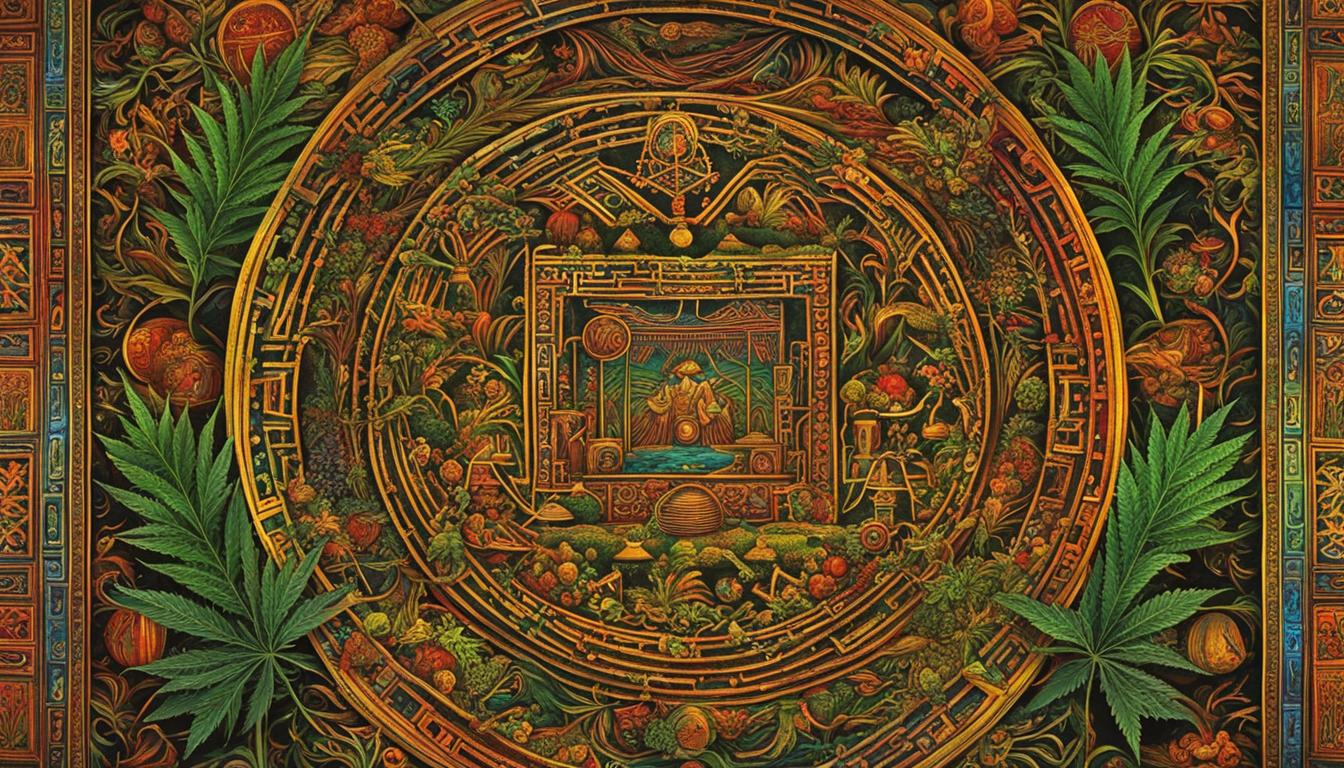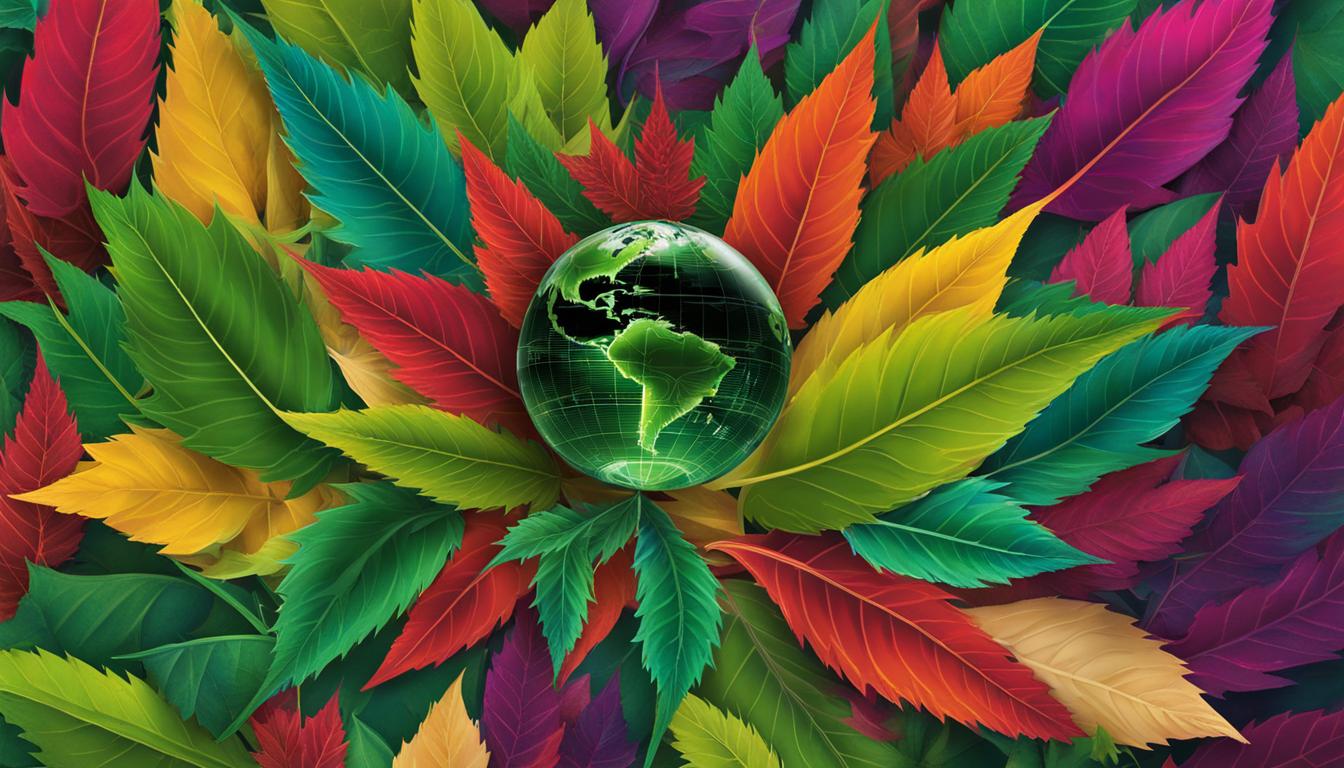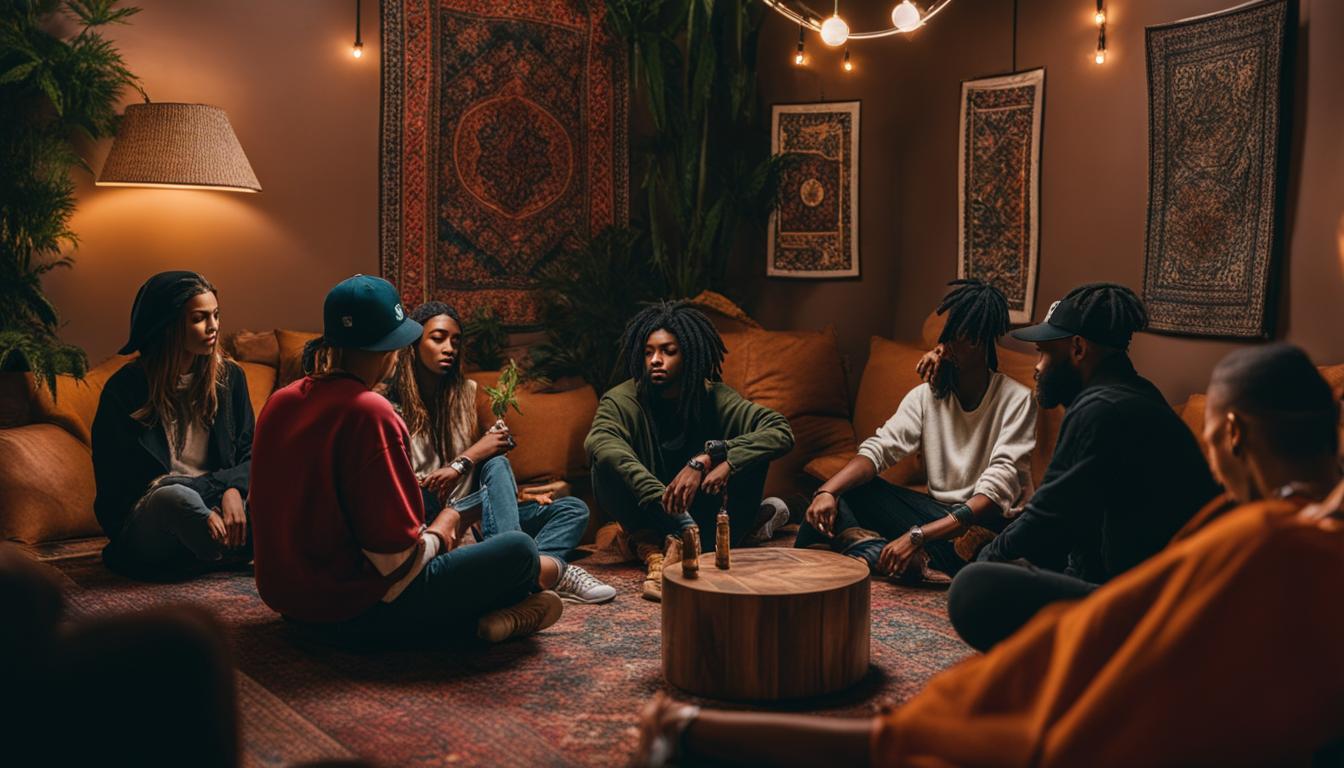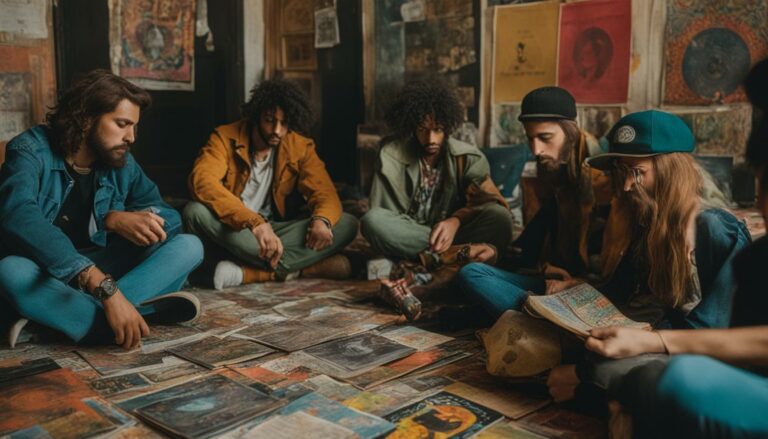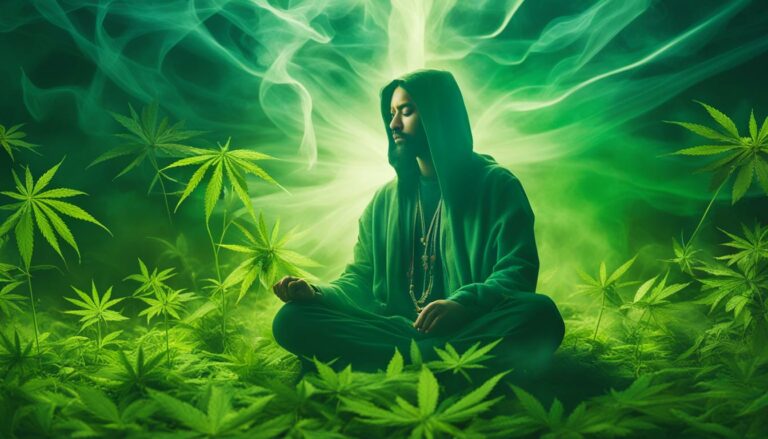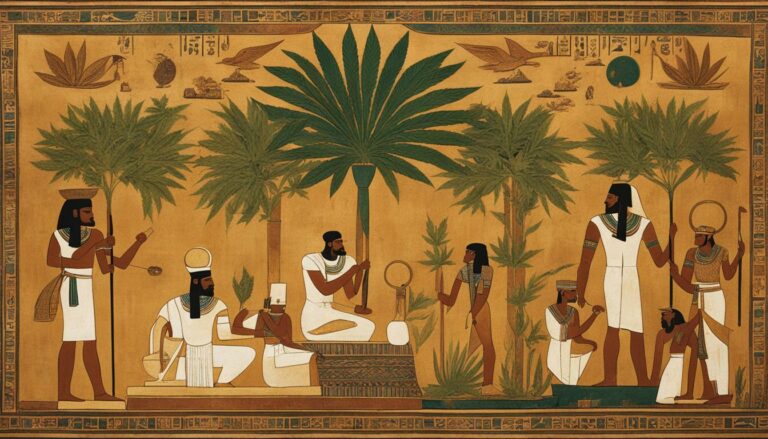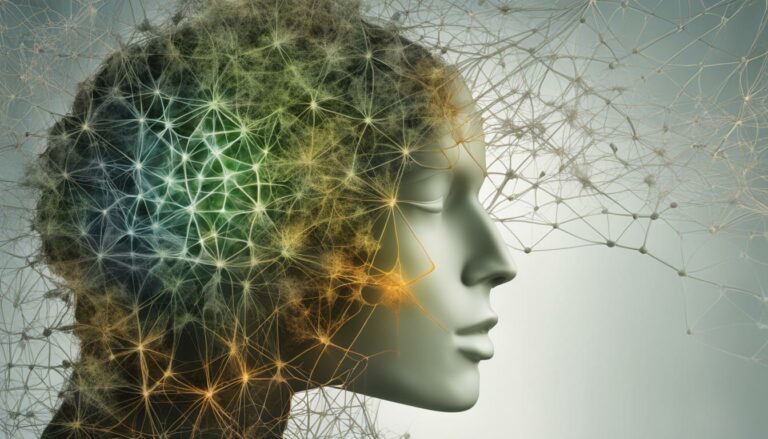Cannabis in Modern Art and Music
Welcome to our exploration of the dynamic relationship between cannabis and art. In this article, we will delve into the fascinating world of cannabis-inspired artwork, its influence on modern art and music, and the rich history of cannabis in artistic expression. Join us as we uncover the powerful connection between cannabis and human creativity, and how it has shaped the artistic landscape throughout history.
From contemporary cannabis art to psychedelic cannabis masterpieces, the cannabis aesthetic has become an integral part of the art world. Artists around the globe have embraced cannabis-themed artwork, showcasing its influence and exploring the depths of its visual and conceptual possibilities.
Discover the mesmerizing beauty of modern cannabis-inspired art, where artists capture the essence of marijuana contemporary art through vibrant colors, intricate designs, and thought-provoking compositions. Immerse yourself in a world where cannabis comes alive on canvas, inviting you to explore its captivating allure.
Uncover the secrets of cannabis in music, where its presence has sparked creativity and inspired generations of musicians. From the psychedelic sounds of the 60s to the reggae rhythms of Bob Marley, cannabis has played a significant role in shaping the music industry and allowing artists to express themselves freely.
Join us as we delve into the historical roots of cannabis in artistic expression, examining its presence in ancient cultures such as China, India, and indigenous communities. Explore how cannabis has influenced spiritual practices, poetry, and artistic endeavors throughout centuries, leaving an indelible mark on human creativity.
Unlock the science behind cannabis and its impact on creativity, as we uncover the brain’s response to cannabinoids and the cognitive processes they stimulate. Discover how cannabis can enhance sensory perception, spark divergent thinking, and ignite innovative ideas, providing a unique tool for artists seeking to expand their creative horizons.
Embark on a journey where cannabis and art converge, exploring how cannabis not only inspires the creation of art but also transforms the way we experience it. Heightened sensory perception, increased introspection, and enhanced appreciation of aesthetics are just some of the ways cannabis enhances our connection with art, allowing us to delve deeper into its meaning and impact.
Join us as we delve into the lives of famous artists who have openly embraced cannabis as a source of inspiration. From Pablo Picasso to Salvador Dali, explore the artistic creations fueled by the influence of cannabis and the profound impact it had on their artistic visions.
Uncover the world of cannabis-inspired art, where ancient civilizations depicted cannabis in their artwork, highlighting its spiritual and natural connection. From ancient Japanese art to Egyptian and Eastern Asian art, witness the enduring influence of cannabis on human creativity across cultures and centuries.
In conclusion, the fusion of cannabis and art has a long and storied history, shaping artistic expression and pushing boundaries. From its ancient roots to the modern creative revolution, cannabis continues to inspire artists and challenge societal norms. As we embrace cannabis in mainstream culture, its role in artistic endeavors is set to evolve and shape the artistic landscape of the future.
The Historical Roots of Cannabis in Artistic Expression
Cannabis has a fascinating history deeply intertwined with artistic expression, spanning ancient cultures across the globe. From ancient China and India to indigenous communities, cannabis played a significant role in spiritual practices and creative endeavors. This rich historical background provides valuable insights into the enduring relationship between cannabis and art.
In ancient China, cannabis held immense value beyond its medicinal properties. It was cherished for its fibers, seeds, and its ability to enhance meditation. Taoist sages relied on cannabis as an aid to deepen their spiritual connection and attain higher levels of consciousness. The ancient Chinese culture recognized the profound influence of cannabis on creativity and explored its potential within artistic expression.
Similarly, in India, cannabis was considered sacred and held deep religious significance. It was used in rituals and ceremonies as an offering to deities, symbolizing a connection between humans and the divine. The integration of cannabis into religious practices reflected the belief that this plant could unlock spiritual insights and foster creative inspiration. The ancient Indian culture celebrated the profound influence of cannabis within the realms of artistic expression and spiritual enlightenment.
Indigenous cultures from all corners of the world also incorporated cannabis into their artistic endeavors. In shamanic practices, cannabis was revered for its ability to induce altered states of consciousness, facilitating visionary experiences. This allowed artists within indigenous communities to tap into realms beyond the physical and translate their spiritual visions into art. The profound impact of cannabis on indigenous art showcases the plant’s role as a conduit for creative expression and cultural identity.
Ancient Cannabis Art
| Ancient Culture | Cannabis Representation |
|---|---|
| Chinese | Depicted cannabis leaves in artwork, symbolizing its connection to spiritual practices and meditation. |
| Indian | Cannabis featured prominently in religious rituals and art, emphasizing its sacred status. |
| Indigenous | Various indigenous cultures incorporated cannabis into their artistic expression, influenced by shamanic practices and visionary experiences. |
The integration of cannabis into artistic expression across different ancient cultures showcases the plant’s profound influence on creativity and spirituality.
Cannabis in the Modern Creative Revolution
In the 20th century, cannabis played a significant role in shaping cultural and artistic movements, particularly during the counterculture of the 1960s. Artists and musicians turned to cannabis as a catalyst for breaking boundaries and exploring new creative realms. Visionaries like Bob Marley and Jimi Hendrix used cannabis to fuel their artistic visions, while authors like Allen Ginsberg and Jack Kerouac embraced it as a means to challenge norms. The modern creative revolution left a lasting impact on art, music, literature, and social norms, shaping artistic expression for years to come.
Cannabis found its place not only in the counterculture but also in the mainstream music industry. Musicians across various genres incorporated cannabis references into their lyrics, signaling the acceptance and widespread presence of weed in music. From Bob Dylan’s “Rainy Day Women #12 & 35” with its playful nod to getting “stoned” to Snoop Dogg’s unabashed celebration of the herb in countless tracks, cannabis has become an integral part of the musical fabric.
Simultaneously, cannabis found its way into the literary world, with authors exploring its role in their work. Allen Ginsberg’s iconic poem “Howl” referenced marijuana, reflecting the spirit of rebellion and nonconformity present during the counterculture era. Jack Kerouac’s novel “On the Road” depicted a generation of young Americans exploring the country while indulging in cannabis and other substances, capturing the ethos of the time. Cannabis became a symbol of freedom and creative exploration, pushing the boundaries of artistic expression.
| Cannabis in the 1960s | Cannabis in Music | Cannabis in Literature | Cannabis in Visual Arts |
|---|---|---|---|
| Cannabis played a significant role in counterculture movements of the 1960s, which challenged societal norms and advocated for peace, love, and creative expression. | Musicians began incorporating cannabis references into their lyrics, signaling its acceptance and mainstream presence in the music industry. | Authors explored cannabis as a means to challenge social conventions and embrace new forms of creativity in their literary works. | Visual artists embraced cannabis as a catalyst for pushing boundaries and exploring new artistic realms. |
| The counterculture era left a lasting impact on art, music, literature, and social norms, shaping artistic expression for years to come. | Cannabis-themed songs became an integral part of the musical fabric, reflecting the spirit of rebellion and nonconformity. | Literature of the time captured the freedom and creative exploration associated with cannabis use. | Visual artists were influenced by cannabis, pushing the boundaries of traditional artistic expression. |
“The counterculture of the 1960s was a time of immense creativity and social change. Cannabis played a central role in this movement, fueling artistic expression and challenging established norms. From the music of Bob Marley to the literature of Jack Kerouac, cannabis became a symbol of freedom and creative exploration. The impact of cannabis in the modern creative revolution cannot be overstated.”
Cannabis in the Counterculture
The counterculture of the 1960s was a time of immense creativity and social change. Cannabis played a central role in this movement, fueling artistic expression and challenging established norms. From the music of Bob Marley to the literature of Jack Kerouac, cannabis became a symbol of freedom and creative exploration. The impact of cannabis in the modern creative revolution cannot be overstated.
The Science of Inspiration: How Cannabis Impacts Creativity
When it comes to creativity, the relationship between cannabis and the human mind is a subject of much intrigue. Cannabis interacts with the brain’s endocannabinoid system, influencing mood, perception, and cognition. The cannabinoids found in cannabis, such as THC and CBD, have been found to have varying effects on creativity and artistic expression.
THC, the psychoactive compound in cannabis, is known to alter perception and induce a state of relaxation and introspection. This altered state of mind can enhance sensory perception, making colors appear more vibrant, sounds more resonant, and textures more palpable. It can also stimulate divergent thinking and free associations, leading to innovative and creative thoughts.
“Cannabis assists to reveal you to yourself.” – Bob Marley
CBD, on the other hand, is non-psychoactive and has been found to have calming and anti-anxiety effects. This can help reduce inhibitions and promote a relaxed state of mind, allowing for freer thinking and the generation of new ideas. CBD has also been shown to have neuroprotective properties and promote neurogenesis, which may support cognitive processes related to creativity.
The impact of cannabis on creativity is subjective and can vary from person to person. While some individuals may find that cannabis enhances their creativity and unlocks new perspectives, others may experience adverse effects such as cognitive impairment or decreased motivation. It is important to note that cannabis affects individuals differently, and responsible and mindful use is always key.
| Cannabinoid | Effects on Creativity |
|---|---|
| THC | Enhances sensory perception |
| Stimulates divergent thinking | |
| Increases introspection | |
| CBD | Reduces inhibitions |
| Promotes relaxation and calmness | |
| Potentially enhances cognitive processes |
Cannabis and How We Make Art
Cannabis has a profound impact on how we create art, fueling our creativity and enhancing our artistic processes. The consumption of cannabis can lead to increased cerebral blood flow, resulting in heightened brain activity that enhances our expressive language and project initiation capabilities. Additionally, cannabis reduces inhibitions, allowing for freer thinking and the generation of new ideas. This combination of increased cerebral blood flow and reduced inhibitions creates an environment conducive to faster and more insightful thinking, nurturing the creative process.
Increased Cerebral Blood Flow and Creativity
The consumption of cannabis has been shown to increase cerebral blood flow, particularly in the frontal lobe of the brain. This area of the brain is responsible for expressive language and initiating projects. With increased blood flow, artists may experience heightened cognitive abilities and a greater capacity for creative expression. The expanded flow of ideas and the ability to easily translate them into artistic endeavors provides artists with a unique opportunity to explore new territories and push the boundaries of their creativity.
Reduced Inhibitions and Creative Freedom
Cannabis has long been known to reduce inhibitions, allowing for a freer flow of thoughts and ideas. By quieting the inner critic, artists can tap into their true creative potential and explore unconventional concepts and techniques. This reduction in inhibitions can lead to the creation of bold and innovative artworks that challenge societal norms and push artistic boundaries. Artists are more likely to take risks and experiment with new ideas, resulting in a rich and diverse artistic landscape.
Faster Thinking and Insightful Creativity
One of the key effects of cannabis consumption is the acceleration of thoughts. This faster thinking can result in heightened creativity as artists are able to quickly and fluidly connect ideas and concepts. The ability to make rapid associations and mental connections can lead to insightful and innovative creative output. With faster thinking, artists can explore various perspectives, challenge conventional wisdom, and create art that captivates and resonates with audiences.
Heightened Sensory Perception and Art
When it comes to experiencing art, cannabis has the remarkable ability to heighten sensory perception. By consuming cannabis, individuals often report enhanced visual, auditory, and tactile experiences while engaging with various art forms. Colors become more vibrant and vivid, bringing artwork to life in a new and captivating way. Sounds become richer and more resonant, adding depth and nuance to musical compositions. Textures become more palpable, allowing viewers to truly feel the details and intricacies of sculptures or textiles. Cannabis opens a gateway to a heightened sensory realm, where art takes on a whole new dimension of beauty and fascination.
Embracing Introspection through Art
Another profound effect of cannabis on the art experience is the increased sense of introspection it brings. When consuming cannabis, individuals often find themselves delving deeper into the artwork, exploring hidden connections, and contemplating the underlying messages and themes. It allows for a more profound engagement with art, providing a gateway to self-reflection and personal insights. Cannabis facilitates a state of mind that encourages introspection, leading to a more meaningful and fulfilling art experience.
“Cannabis enhances my ability to perceive the intricate details in artwork and connect with the emotions it evokes. It’s like peering into the artist’s soul and experiencing the depth of their creation on a profound level.” – Art enthusiast
Unlocking an Enhanced Appreciation for Aesthetics
Additionally, cannabis users often exhibit an enhanced appreciation for the aesthetics of art. They have a heightened ability to recognize and appreciate the skill, creativity, and emotional expression that artists pour into their work. Cannabis ignites a sense of wonder and awe, allowing individuals to connect with the artist’s intention and connect emotionally with the artwork. It opens the door to a deeper level of understanding and connection, fostering a greater appreciation for the power of art to evoke emotions and transcend boundaries.
| Effects of Cannabis on the Art Experience | Summary |
|---|---|
| Heightened sensory perception | Cannabis enhances the visual, auditory, and tactile experiences while engaging with art. |
| Increased introspection | Cannabis facilitates a deeper exploration of hidden connections and themes within artwork, leading to a more profound engagement. |
| Enhanced appreciation for aesthetics | Cannabis users exhibit a greater recognition and emotional connection with the skill and expression of artists, fostering a deeper appreciation for art’s power. |
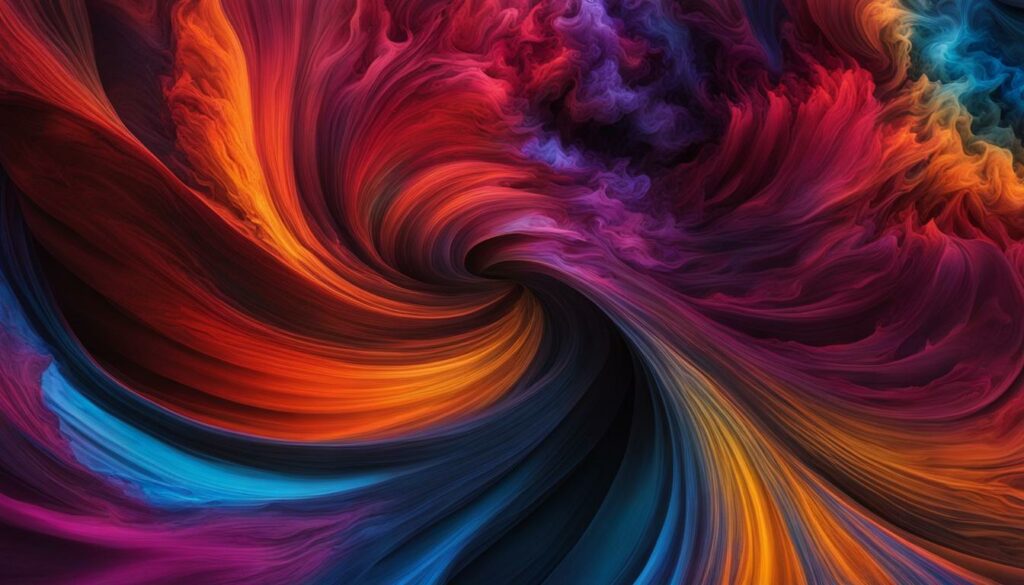
Famous Artists Inspired by Cannabis
Throughout history, cannabis has served as a muse for many renowned artists, fueling their creativity and influencing their artistic expression. From painters to sculptors, poets to playwrights, several famous artists have openly acknowledged their use of cannabis as a source of inspiration.
Pablo Picasso and Cannabis
“When I was a young man, I took a trip to the South of France, and that’s where I discovered cannabis. It opened up my mind to new possibilities and allowed me to see the world in a different light. Cannabis became an integral part of my creative process, enabling me to experiment with new artistic styles and push the boundaries of traditional art forms.” – Pablo Picasso
Pablo Picasso, one of the most influential artists of the 20th century, reportedly used hashish pills to enhance his creativity. His bold and innovative approach to art was fueled by the altered state of mind induced by cannabis, which allowed him to explore new artistic territories and challenge conventional norms.
Pierre Schmidt and Cannabis
Pierre Schmidt, a German artist also known as “Drømsjel,” has openly credited cannabis as an essential tool in his creative process. His intricate and surreal artworks often depict vivid dreamscapes, which are believed to be inspired by the altered perception and introspection facilitated by cannabis.
Salvador Dali and Cannabis
Salvador Dali, the iconic surrealist artist, is often associated with altered states of consciousness in his artwork. While evidence of his cannabis use is inconclusive, his mind-bending and fantastical creations have sparked speculation about the role of cannabis in his creative process.
William Shakespeare and Cannabis
The extent of William Shakespeare’s cannabis use remains a subject of debate among scholars. While some argue that his works contain subtle references to cannabis, others attribute the visionary quality of his writing to his profound understanding of human nature and the human condition.
These artists demonstrate that cannabis has played a significant role in enhancing their creativity and pushing the boundaries of artistic expression. By embracing the influence of cannabis, they have left an indelible mark on the art world, inspiring generations of artists to explore new horizons and challenge conventional norms.
Cannabis-Inspired Art
The fusion of cannabis and art has a long and storied history, spanning ancient civilizations to the modern creative revolution. Cannabis has served as a muse for artists, inspiring them to create works that capture the essence of the plant and its influence on human creativity. From ancient cannabis art to modern cannabis-inspired pieces, the connection between weed and art is undeniable.
Ancient civilizations recognized the spiritual and natural significance of cannabis, and it is evident in their artwork. Ancient cannabis art often depicted cannabis leaves, symbolizing the plant’s connection to spirituality and the natural world. These ancient pieces serve as a testament to the enduring allure of cannabis as a source of inspiration throughout history.
Today, contemporary artists continue to explore the realm of cannabis-inspired art. They use various mediums such as paintings, sculptures, and digital art to capture the complexity and beauty of cannabis. These modern artworks not only showcase the plant itself but also reflect the cultural, social, and political significance of cannabis in today’s society.
Cannabis-inspired art provides a platform for artists to express their creativity, share their experiences, and challenge societal norms. It serves as a visual representation of the profound impact that cannabis has on human creativity and the artistic landscape. As the acceptance and legalization of cannabis continue to grow, we can expect the world of cannabis-inspired art to flourish and evolve, offering new perspectives and insights into the relationship between cannabis and artistic expression.
Marijuana in Ancient Art
Art has been a reflection of human culture and beliefs throughout history, and cannabis has played a significant role in artistic expression for centuries. From ancient Japan to Egypt and Eastern Asia, cannabis has been depicted in various forms of art, showcasing its cultural and spiritual significance.
In ancient Japanese art, cannabis leaves are prominently featured in drawings and paintings dating back to around 5,000 BCE. These depictions suggest that cannabis had a significant presence in Japanese culture and held symbolic meaning. It is believed that cannabis was associated with medicinal properties and was used in religious rituals.
Ancient Egyptian art also showcases the influence of cannabis. Stone carvings and wall paintings depict leaves reminiscent of cannabis, suggesting that it was a plant of importance in Egyptian society. While the exact role and purpose of cannabis in ancient Egypt remain a topic of speculation and debate, its presence in their art highlights its cultural significance.
Similarly, ancient Eastern Asian art from the 11th to 13th centuries shows a strong influence of cannabis. Artworks dedicated to cannabis and the goddess Magu, who may have been associated with safeguarding cannabis, further emphasize the plant’s cultural importance.
Through these ancient depictions, we can see the enduring relationship between cannabis and human creativity. Cannabis not only played a role in ancient rituals and medicinal practices but also inspired artists to incorporate it into their art, reflecting its cultural and spiritual significance. These artworks serve as a testament to the lasting influence of cannabis in ancient societies and its continued impact on artistic expression throughout the ages.
Weed Art in the In-Between
As cannabis gained popularity and cultural acceptance, it began to make its way into various forms of artistic expression. In the 17th century, artists embraced the use of cannabis as a subject matter in their paintings, capturing the social and cultural context of the time. Cannabis themes also found their way into the opulent and extravagant style of Baroque art, often symbolizing indulgence and earthly pleasures. By the 19th century, cannabis-inspired art became more prevalent, reflecting shifting societal attitudes towards the plant.
The Influence of Cannabis in 17th-Century Art
In the 17th century, artists like Adriaen Brouwer and David Teniers incorporated cannabis use into their paintings, showcasing scenes of revelry and social gatherings. These artworks often depicted the leisure activities of the elite, highlighting the popular use of cannabis during this time. Cannabis was portrayed not only as a recreational substance but also as a symbol of luxury and indulgence. The inclusion of cannabis in these paintings served as a reflection of the cultural attitudes and experiences of the 17th-century society.
Cannabis in Baroque Art: Symbolism and Extravagance
During the Baroque period, cannabis became associated with indulgence and pleasure, making its way into the opulent artworks of the time. Baroque artists employed symbolism to convey complex narratives and emotions, and cannabis was often used as a metaphor for extravagant and sensual experiences. The inclusion of cannabis leaves or smoking implements in Baroque paintings served as a visual cue for the viewer to interpret the scene as one of indulgence and earthly delights. Cannabis imagery in Baroque art became a reflection of the artistic and cultural themes of the period.
The Rise of Cannabis-Inspired Art in the 19th Century
By the 19th century, cannabis-inspired art became more common as societal attitudes towards the plant began to shift. Artists like Gaetano Previati explored the effects of cannabis in their works, often depicting dreamlike landscapes and ethereal scenes. These artworks reflected a growing interest in altered states of consciousness and the exploration of the inner self. Cannabis imagery in 19th-century art served as a symbol of creativity, introspection, and the pursuit of new artistic frontiers.
| Artwork | Artist | Year |
|---|---|---|
| The Smoker | Adriaen Brouwer | circa 1630 |
| The Smoker | David Teniers | circa 1650 |
| The Smoking Man | Joos van Craesbeeck | circa 1635-1645 |
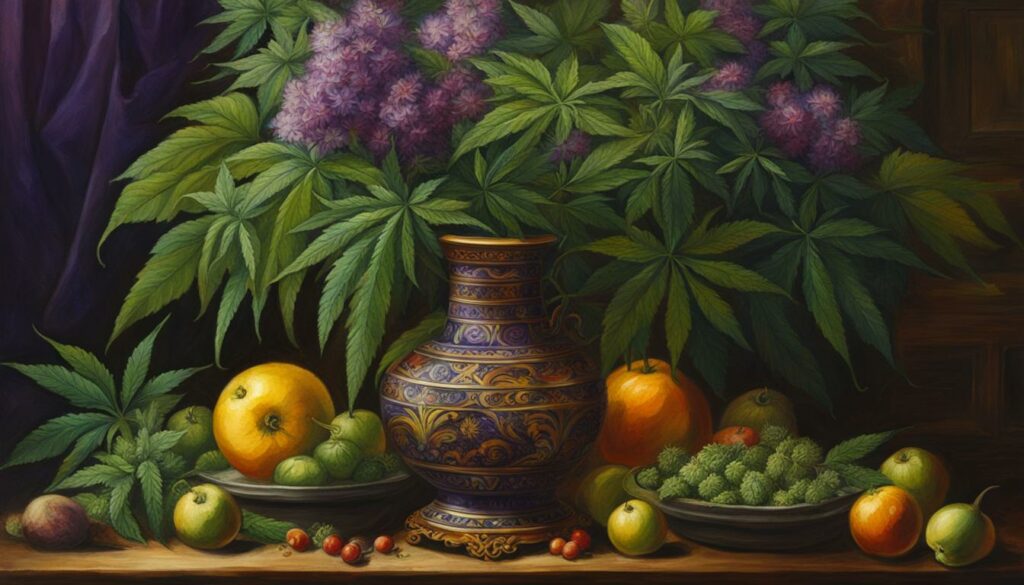
“The inclusion of cannabis in 17th-century art is a testament to its cultural significance and acceptance during that time. These artworks provide a lens into the social and recreational practices of the elite, as well as the artistic expression of indulgence and pleasure.” – Art Historian
Cannabis has had a profound impact on the world of art throughout history. In the 17th century, it became a subject matter in paintings, representing social gatherings and indulgence. During the Baroque period, cannabis imagery symbolized extravagance and earthly delights. In the 19th century, artists explored the effects of cannabis in their works, capturing dreamlike experiences and introspection. The presence of cannabis in these artworks not only reflects the evolving societal attitudes towards the plant but also underscores its enduring influence on human creativity and artistic expression.
Art, Weed, and Modern
Cannabis continues to inspire modern artists, with many contemporary artists incorporating cannabis themes and imagery into their works. From paintings to music, the influence of cannabis can be seen and felt in various artistic expressions. The connection between art and weed remains strong in the modern era, reflecting the enduring relationship between cannabis and human creativity.
Modern cannabis-inspired art pushes boundaries and challenges traditional artistic conventions. Artists experiment with unique styles, techniques, and mediums to capture the essence of cannabis in their work. Whether through vivid and psychedelic paintings, abstract sculptures, or experimental music, contemporary artists use cannabis as a muse to explore new artistic frontiers.
Cannabis has also found its place in modern paintings, with artists using the plant as a symbol of rebellion, spirituality, or personal freedom. These artworks often convey a sense of introspection, inviting viewers to contemplate the complex relationship between society, nature, and mind-altering substances. Through their art, contemporary artists strive to spark conversations and challenge societal norms surrounding cannabis.
In the realm of modern music, cannabis continues to play a prominent role. Musicians draw inspiration from the plant’s transformative effects, crafting songs that capture the euphoria, introspection, and communal experiences associated with cannabis. From genres like hip-hop and reggae to electronic music and alternative rock, cannabis-infused lyrics and melodies resonate with audiences worldwide.
Table: Contemporary Cannabis Artists
| Artist | Medium | Style |
|---|---|---|
| Jane Smith | Painting | Abstract |
| John Doe | Sculpture | Contemporary |
| Emily Johnson | Photography | Experimental |
| David Thompson | Music | Electronic |
Contemporary cannabis artists embrace the diverse nature of the plant, infusing their art with a sense of authenticity and cultural relevance. Through their creative expressions, they contribute to the ongoing dialogue surrounding cannabis, challenging perceptions and pushing artistic boundaries.
Conclusion
The fusion of cannabis and art has a long and storied history, spanning ancient civilizations to the modern creative revolution. Cannabis has been a catalyst for artistic expression, inspiration, and exploration. From ancient cannabis art to contemporary cannabis-inspired works, the influence of weed in the art world is undeniable.
Throughout the ages, artists have turned to cannabis as a source of inspiration, using its effects to unlock their creative potential. The plant has been revered and celebrated in various cultures, with its imagery and symbolism deeply ingrained in artistic expressions.
As society continues to embrace and accept cannabis, its role in artistic endeavors will likely continue to evolve and shape the artistic landscape of the future. The acceptance of cannabis in mainstream culture has opened doors for artists to explore new realms of creativity and challenge societal norms.
With its ability to enhance sensory perception, stimulate divergent thinking, and increase introspection, cannabis remains a powerful tool for artists looking to unlock their imagination and bring their visions to life. As the relationship between art and weed continues to flourish, we can expect to witness even more groundbreaking and thought-provoking works that push the boundaries of artistic expression.
FAQ
How has cannabis influenced modern art and music?
Cannabis has been present in music genres like psychedelic rock and reggae for many years, inspiring musicians and enhancing their creativity. It has also been a subject and source of inspiration in various art forms, with artists incorporating cannabis themes and imagery into their works.
What is the historical connection between cannabis and artistic expression?
Cannabis has a rich history in ancient cultures, where it was used for spiritual practices and creative expression. It was valued for its fibers, seeds, and medicinal properties in ancient China, considered sacred in India, and incorporated into shamanic practices worldwide.
How did cannabis influence the modern creative revolution?
During the counterculture of the 1960s, cannabis played a significant role in shaping cultural and artistic movements. Artists and musicians turned to cannabis as a catalyst for breaking boundaries and exploring new creative realms.
How does cannabis impact creativity?
Cannabis interacts with the brain’s endocannabinoid system, influencing mood, perception, and cognition. The cannabinoids in cannabis can enhance sensory perception, increase introspection, and stimulate divergent thinking, leading to innovative and creative thinking.
How does cannabis affect the artistic process?
Cannabis can increase cerebral blood flow, reduce inhibitions, and speed up thoughts, all of which contribute to freer thinking, generating new ideas, and initiating creative projects.
How does cannabis enhance the experience of art?
When consumed while appreciating art, cannabis enhances sensory perception, increases introspection, and allows for deeper contemplation and exploration of hidden connections within the artwork. It also leads to a greater emotional connection and appreciation of aesthetics.
Which famous artists have been inspired by cannabis?
Pablo Picasso, Pierre Schmidt, Salvador Dali, and William Shakespeare are among the artists who have openly acknowledged their use of cannabis as a source of inspiration in their artistic endeavors.
Is there evidence of cannabis in ancient art?
Yes, ancient civilizations depicted cannabis leaves in their artwork, highlighting its connection to spirituality and nature. Ancient Japanese, Egyptian, and Eastern Asian art feature cannabis-inspired imagery.
How does cannabis continue to influence modern art?
Contemporary artists still incorporate cannabis themes and imagery into their works, capturing the essence of the plant and its influence on human creativity. The connection between art and weed remains strong in the modern era.
What is the future of cannabis in art?
As society continues to embrace and accept cannabis, its role in artistic endeavors will likely continue to evolve and shape the artistic landscape of the future.

